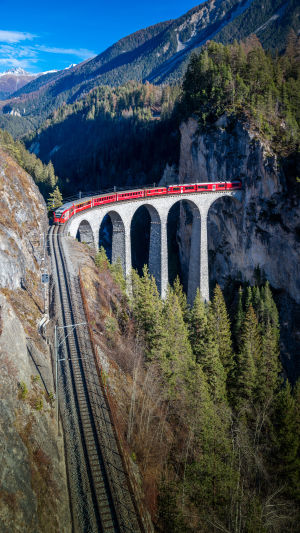What is the best way to explore Switzerland? Trains, buses, or boats?
Switzerland's outstanding public transportation system makes the entire country easily accessible.
In the Alpine nation of Switzerland, life coexists with hardship, desolation, and danger. But these mysterious mountains also attract numerous brave adventurers.
Since the advent of railways in Britain, Switzerland has vigorously developed its railway infrastructure to improve the then inconvenient transportation situation. In 1847, Switzerland's first railway line opened, starting from Zurich and heading to the town of Baden. Since then, Switzerland's railway technology has continuously evolved and developed.
The rapid expansion of the railway network and the construction of numerous mountain passes in the Alps have brought thrilling experiences to group tours in Switzerland. Adventurous tourists who love exploring Switzerland are always pushing towards new heights. Innovative rack railway technology allows visitors to ascend the steepest peaks.
This summer, what routes are worth looking forward to? Pack your bags, grab your tickets, and join us in exploring!
<b>1. Bernina Express</b>
On the highest railway track in Europe and the steepest in the world, the Bernina Express will take passengers on a unique journey. Crossing 55 tunnels and 196 bridges, it traverses wild and romantic gorges, passes by spectacular man-made structures, ascends to the eternal ice of glaciers, and descends to the palm trees of the Italian town of Tirano. No other route offers such spectacular scenery.
<b>2. UNESCO World Heritage Pass</b>
The Albula-Bernina railway line traversed by the Bernina Express is listed as a UNESCO World Heritage site.
The World Heritage train line stretches for 122 kilometers, passing through 196 bridges, 55 tunnels, and 20 villages, with a history of over 100 years. The train passes by the vast Morteratsch Glacier, visits the Albula Railway Museum, crosses Europe's highest Alpine railway pass, and then winds its way to Poschiavo.
Gaze up at the towering Landwasser Viaduct, traverse the "world's first spiral tunnel," and explore the Brusio Circular Viaduct, all architectural wonders that will leave you amazed. Along this route, there is a unique hiking trail that crisscrosses the railway line, dividing the 131 kilometers into 10 stages. From north to south along the Albula and Bernina lines, crossing three language regions and cultures, you can observe bridges, buildings, and old train stations up close.
In addition to natural landscapes and cultural landmarks, Switzerland's Grand Train Tour also emphasizes environmental protection and sustainability. Switzerland's transportation system achieves 90% of its electricity from hydroelectric power, and energy procurement for stations, office buildings, and production facilities has reached carbon neutrality. By 2025, the plan is to source all energy from 100% renewable sources.
The Swiss Federal Railways will continue to implement sustainable transportation methods, such as "adaptive control," which provides recommendations to train drivers to minimize unplanned stops and drive in more energy-efficient ways.
Furthermore, Switzerland boasts 18 natural parks, occupying 15% of its land area, further demonstrating Switzerland's commitment to nature conservation. On the Grand Train Tour of Switzerland, tourists can delve into these natural parks and experience the wonders and beauty of nature. Switzerland's transportation system and environmental principles also provide a sustainable travel model for the world, making it a leading example in the field of environmental conservation.





